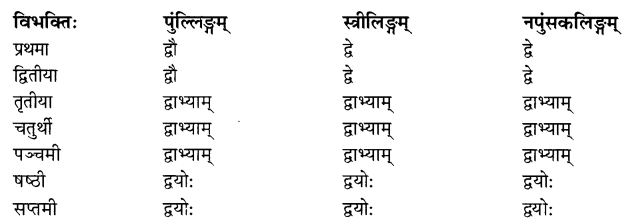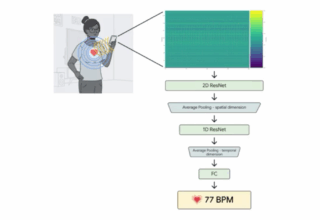Table of Contents
ToggleIntroduction
In Sanskrit grammar, Akarant Shabd Roop refers to the declension of masculine nouns that end with the suffix ‘a.’ These nouns are pivotal in Sanskrit syntax and morphology, influencing sentence construction and meaning. Understanding these forms is essential for mastering Sanskrit grammar.
Definition of Akarant Shabd Roop
Akarant Shabd Roop pertains to masculine nouns that conclude with the vowel ‘a’ in their base form. This category is significant because it affects how these words change in different grammatical cases, such as nominative, accusative, instrumental, and others.
Declension of Masculine Nouns Ending in ‘a’
Singular Forms
- Nominative Case (Subject):
- Form: -aḥ (Example: रामः – Rāmaḥ)
- Usage: Used to identify the subject of the sentence.
- Example Sentence: रामः गत्वा विद्यालयं आगच्छति। (Rāmaḥ gatvā vidyālayaṃ āgacchati.) – Rama goes to school.
- Accusative Case (Object):
- Form: -am (Example: रामम् – Rāmam)
- Usage: Used to denote the direct object of the action.
- Example Sentence: अहं रामम् पश्यामि। (Ahaṃ Rāmam paśyāmi.) – I see Rama.
- Instrumental Case (By/With):
- Form: -ena (Example: रामेण – Rāmeṇa)
- Usage: Indicates the means or instrument by which an action is performed.
- Example Sentence: रामेण लेखनं कृतम्। (Rāmeṇa lekhanam kṛtam.) – The writing was done by Rama.
- Dative Case (To/For):
- Form: -āya (Example: रामाय – Rāmāya)
- Usage: Used to show the recipient of an action or benefit.
- Example Sentence: अहं रामाय पत्रं लेखामि। (Ahaṃ Rāmāya patraṃ lekhāmi.) – I write a letter to Rama.
- Ablative Case (From):
- Form: -āt (Example: रामāt – Rāmāt)
- Usage: Indicates the source or point of departure.
- Example Sentence: रामāt पुस्तकं प्राप्तम्। (Rāmāt pustakaṃ prāptam.) – The book was received from Rama.
- Genitive Case (Of):
- Form: -asya (Example: रामasya – Rāmasya)
- Usage: Shows possession or relation.
- Example Sentence: रामasya घरम् सुन्दरम्। (Rāmasya gṛham sundaram.) – Rama’s house is beautiful.
- Locative Case (In/On):
- Form: -e (Example: रामे – Rāme)
- Usage: Indicates location or time.
- Example Sentence: रामे पुस्तकं अस्ति। (Rāme pustakaṃ asti.) – There is a book with Rama.
- Vocative Case (Addressing):
- Form: -a (Example: हे राम – He Rāma)
- Usage: Used when addressing someone directly.
- Example Sentence: हे राम! आगच्छ। (He Rāma! āgaccha.) – O Rama! Come here.
Dual Forms
- Nominative Case:
- Form: -au (Example: रामौ – Rāmau)
- Usage: Refers to two people or objects.
- Example Sentence: रामौ विद्यालये गत्वा आगच्छत:। (Rāmau vidyālaye gatvā āgacchataḥ.) – The two Ramas go to school.
- Accusative Case:
- Form: -au (Example: रामौ – Rāmau)
- Usage: Indicates the direct object when there are two.
- Example Sentence: अहं रामौ पश्यामि। (Ahaṃ Rāmau paśyāmi.) – I see the two Ramas.
- Instrumental Case:
- Form: -ābhyām (Example: रामābhyām – Rāmābhyām)
- Usage: By means of or with respect to two.
- Example Sentence: रामābhyām लेखनं कृतम्। (Rāmābhyām lekhanam kṛtam.) – The writing was done by the two Ramas.
- Dative Case:
- Form: -ābhyām (Example: रामābhyām – Rāmābhyām)
- Usage: For or to two entities.
- Example Sentence: रामābhyām पत्रं लिखामि। (Rāmābhyām patraṃ likhāmi.) – I write a letter to the two Ramas.
- Ablative Case:
- Form: -ābhyām (Example: रामābhyām – Rāmābhyām)
- Usage: From two entities.
- Example Sentence: रामābhyām पुस्तकं प्राप्तम्। (Rāmābhyām pustakaṃ prāptam.) – The book was received from the two Ramas.
- Genitive Case:
- Form: -ayoḥ (Example: रामayoḥ – Rāmayoḥ)
- Usage: Of two entities.
- Example Sentence: रामayoḥ घरं सुन्दरं। (Rāmayoḥ gṛham sundaram.) – The house of the two Ramas is beautiful.
- Locative Case:
- Form: -ayoḥ (Example: रामayoḥ – Rāmayoḥ)
- Usage: In/on the two entities.
- Example Sentence: रामayoḥ पुस्तकं अस्ति। (Rāmayoḥ pustakaṃ asti.) – There is a book with the two Ramas.
- Vocative Case:
- Form: -au (Example: हे रामौ – He Rāmau)
- Usage: Addressing two directly.
- Example Sentence: हे रामौ! आगच्छताम्। (He Rāmau! āgacchatām.) – O Ramas! Come here.
Plural Forms
- Nominative Case:
- Form: -āḥ (Example: रामāḥ – Rāmāḥ)
- Usage: Refers to more than two entities.
- Example Sentence: रामāḥ विद्यालये गत्वा आगच्छन्ति। (Rāmāḥ vidyālaye gatvā āgacchanti.) – The Ramas go to school.
- Accusative Case:
- Form: -ān (Example: रामān – Rāmān)
- Usage: Direct object for more than two.
- Example Sentence: अहं रामān पश्यामि। (Ahaṃ Rāmān paśyāmi.) – I see the Ramas.
- Instrumental Case:
- Form: -aiḥ (Example: रामaiḥ – Rāmaiḥ)
- Usage: With or by means of multiple entities.
- Example Sentence: रामaiḥ लेखनं कृतम्। (Rāmaiḥ lekhanam kṛtam.) – The writing was done by the Ramas.
- Dative Case:
- Form: -eṣām (Example: रामeṣām – Rāmāṣām)
- Usage: To or for multiple entities.
- Example Sentence: रामeṣām पत्रं लिखामि। (Rāmāṣām patraṃ likhāmi.) – I write a letter to the Ramas.
- Ablative Case:
- Form: -eṣām (Example: रामeṣām – Rāmāṣām)
- Usage: From multiple entities.
- Example Sentence: रामeṣām पुस्तकं प्राप्तम्। (Rāmāṣām pustakaṃ prāptam.) – The book was received from the Ramas.
- Genitive Case:
- Form: -ānām (Example: रामānām – Rāmānām)
- Usage: Of multiple entities.
- Example Sentence: रामānām घरं सुन्दरं। (Rāmānām gṛham sundaram.) – The house of the Ramas is beautiful.
- Locative Case:
- Form: -eṣu (Example: रामeṣu – Rāmāṣu)
- Usage: In/on multiple entities.
- Example Sentence: रामeṣu पुस्तकं अस्ति। (Rāmāṣu pustakaṃ asti.) – There is a book with the Ramas.
- Vocative Case:
- Form: -āḥ (Example: हे रामāḥ – He Rāmāḥ)
- Usage: Addressing multiple entities.
- Example Sentence: हे रामāḥ! आगच्छताम्। (He Rāmāḥ! āgacchatām.) – O Ramas! Come here.
Conclusion
Understanding Akarant Shabd Roop, or the declension of masculine nouns ending in ‘a,’ is crucial for accurate Sanskrit grammar. By mastering these forms, you can enhance your ability to construct and interpret sentences, thereby deepening your comprehension and appreciation of the Sanskrit language.



















